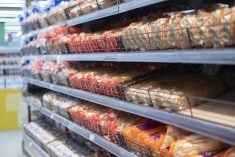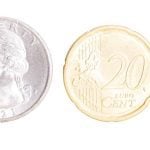SOUTH
With seeding complete, conditions are relatively close to ideal with minimal stress caused by excess moisture, drought or disease pressure. However, cool weather has delayed normal crop development by seven to 10 days.
Rainfall varied from trace amounts to about 20 millimetres. Many producers are beginning to ask for more rain but there are no visible signs of stress due to lack of moisture.
Wheat spraying is about three quarters complete and much of the first herbicide application for canola and pulses is done. Later seeded crops like barley will need to be sprayed.
Read Also

U.S. grains: soybeans firm ahead of USDA data
Chicago soybeans ticked up slightly on Wednesday as traders adjusted positions ahead of the release of official U.S. data on global supply and demand on Friday, the first update in weeks, but prices were capped by a lack of large Chinese purchases.
CENTRAL
Seeding is wrapped up and a few days of warm weather has helped further crop development, although they lag about a week from normal years.
Precipitation varied from 25-40 mm across the region with the western half receiving more moisture.
Most cereals crops are in the two to four leaf stage. Canola is in the one to three leaf stage. Leaf diseases are beginning to show on cereals.
Topsoil moisture is rated as excellent and farmers are spraying for weeds.
NORTHEAST
Most seeding is complete with only barley remaining. Precipitation ranged from 25-50 mm. About 20 percent of farm acres have excessive moisture and about two percent will go unseeded.
The area is reportedly 10-12 days behind normal crop development.
Most wheat is at the three leaf stage; canola from cotyledon to three leaf; peas and fababeans at four nodes; and barley at one to two leaf.
Damage from flea beetles is reported to be about 10 percent but crops are staying ahead and outgrowing them.
Topsoil moisture conditions for croplands, hay land and pastures are rated excellent.
NORTHWEST
Seeding is basically finished with only some silage (oats and barley) fields left as topsoil dries.
Rainfall varied widely from 15-50 mm with prevailing cooler weather compared to normal years.
Topsoil moisture conditions for croplands, hay land and pastures are rated excellent. Many producers are waiting to spray due to excessive moisture.
Dairy producers have started taking off their first crop of silage.
PEACE
Most producers have finished seeding and are applying herbicides.
Rainfall varied from trace amounts to about 25 mm.
Weather has gradually warmed and crop emergence and development is progressing well with normal development compared to previous years.
Canola varies from cotyledon to the three leaf stage; early seeded cereals are from the three and four leaf stage.
There are reports of localized damage caused by flea beetles and cutworms.
Topsoil moisture conditions on cropland vary from dry to excessive but are generally rated in good condition.














